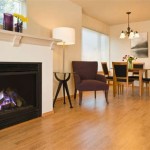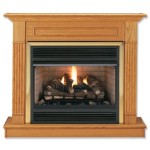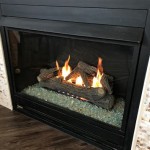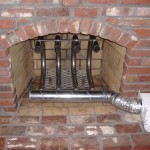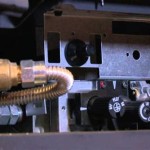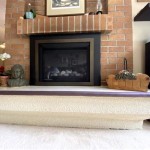Blower Fan for Gas Fireplace: Enhancing Heating Efficiency and Comfort
A gas fireplace offers a convenient and aesthetically pleasing alternative to traditional wood-burning fireplaces. However, simply having a gas fireplace does not guarantee optimal heat distribution in a living space. A significant improvement to the heating capability of a gas fireplace can be achieved through the integration of a blower fan. This article provides an in-depth examination of blower fans for gas fireplaces, exploring their functionality, benefits, selection criteria, installation considerations, maintenance requirements, and troubleshooting tips.
A blower fan, also known as a fireplace fan or a circulating fan, is an auxiliary device designed to enhance the efficiency of a gas fireplace by actively circulating heated air into the surrounding room. Without a blower fan, much of the heat generated by the fireplace rises directly to the ceiling or is confined within the firebox. This leads to uneven heating, with the area immediately around the fireplace becoming excessively warm while other parts of the room remain relatively cool. A blower fan effectively addresses this issue by forcing the heated air outward, promoting more consistent and comfortable temperatures throughout the space.
How Blower Fans Work: Principles of Convection and Forced Air
The operation of a blower fan revolves around the principles of convection and forced air circulation. A gas fireplace produces heat through the combustion of natural gas or propane, warming the metal firebox and surrounding components. As the air within the firebox heats up, it naturally rises due to its reduced density, a process known as convection. This natural convection, however, is often insufficient to adequately distribute heat across a larger room.
A blower fan supplements this natural convection by drawing cool air from the floor level or from behind the fireplace and forcing it across the heated surfaces of the firebox. This forces the warmed air out into the room, increasing the overall airflow and accelerating the distribution of heat. The blower fan typically consists of an electric motor driving a centrifugal fan or a squirrel cage fan. The centrifugal design is favored for its ability to move a large volume of air quietly, making it suitable for residential applications. The speed of the fan is often adjustable, allowing users to control the airflow and the rate at which heat is distributed.
The placement of the blower fan is crucial for optimal performance. Most gas fireplaces are designed with a designated space for the blower fan, usually located beneath or behind the firebox. This ensures that the fan can effectively draw in cool air and direct it across the heated components. The fan's housing is typically designed to withstand the elevated temperatures generated by the fireplace.
Key Benefits of Using a Blower Fan
Integrating a blower fan into a gas fireplace system offers several distinct advantages, contributing to improved heating efficiency and enhanced comfort within the living space.
Enhanced Heat Distribution: The most significant benefit of a blower fan is its ability to improve heat distribution. By actively circulating heated air, the fan eliminates hot spots near the fireplace and cold spots further away. This results in a more uniform and comfortable temperature throughout the room. This is particularly beneficial in larger rooms or open-concept living spaces where natural convection alone is insufficient to provide adequate heating.
Increased Heating Efficiency: A blower fan can also increase the overall heating efficiency of a gas fireplace. By circulating the heated air more effectively, the fireplace can warm the room faster and maintain a more consistent temperature. This reduces the need to constantly adjust the fireplace's settings and can lead to lower energy consumption. The fireplace operates more efficiently because the heat generated is being utilized more effectively, rather than being lost to the upper reaches of the room.
Improved Comfort: Beyond just temperature, a blower fan contributes to a greater sense of comfort within the room. By reducing temperature variations and eliminating drafts, the fan creates a more consistent and pleasant environment. This is especially important during colder months when maintaining a comfortable indoor temperature is crucial for well-being.
Reduced Fireplace Surface Temperature: While seemingly counterintuitive, a blower fan can also reduce the surface temperature of the fireplace itself. By drawing air across the hot surfaces of the firebox, the fan helps to dissipate heat more quickly. This can make the fireplace safer to touch and reduces the risk of accidental burns. While the glass front of the fireplace will still get hot, the surrounding surfaces may be cooler.
Factors to Consider When Selecting a Blower Fan
Choosing the right blower fan for a gas fireplace requires careful consideration of several factors to ensure optimal performance and compatibility. These factors include fireplace compatibility, airflow capacity, noise level, control options, and energy efficiency.
Fireplace Compatibility: The most important factor is ensuring that the blower fan is compatible with the specific model of gas fireplace. Fireplace manufacturers often offer blower fan kits designed specifically for their fireplaces. These kits ensure proper fit, electrical connectivity, and safety. Using a non-compatible fan can void the fireplace warranty or even pose a safety hazard. Checking the fireplace's owner manual or contacting the manufacturer is crucial to identifying the correct blower fan model.
Airflow Capacity (CFM): Airflow capacity, measured in cubic feet per minute (CFM), indicates the volume of air the fan can move. The appropriate CFM rating depends on the size of the room and the heating capacity of the fireplace. Larger rooms and higher-output fireplaces generally require fans with higher CFM ratings. Consult the manufacturer's recommendations or consult with a fireplace professional to determine the optimal CFM for a specific application.
Noise Level (Decibels): Noise level is an important consideration, especially for bedrooms or living rooms where quiet operation is desired. Blower fans can generate noise due to the motor and the movement of air. Look for fans with low decibel ratings (dB) to minimize noise disruption. Some manufacturers specify the noise level at different fan speeds. Considering a variable speed fan is beneficial, so that the speed and noise can be adjusted to the user's preference.
Control Options: Blower fans typically offer different control options, ranging from simple on/off switches to variable speed controls and even thermostatic controls. Variable speed controls allow users to adjust the airflow to match their comfort preferences. Thermostatic controls automatically adjust the fan speed based on the temperature of the fireplace, providing hands-free operation and optimal energy efficiency. Some advanced models may even offer remote control functionality.
Energy Efficiency: While blower fans consume relatively little electricity, it is still worth considering energy efficiency, especially for frequent use. Look for fans with energy-efficient motors and low power consumption. Some models may feature energy-saving modes or automatic shut-off timers.
Installation Considerations
Proper installation of a blower fan is essential for safe and effective operation. While some homeowners may be comfortable with DIY installation, it's generally recommended to hire a qualified technician for the job. Incorrect installation can lead to electrical hazards, reduced fan performance, or even damage to the fireplace.
Consult the Owner's Manual: The first step is to carefully review the installation instructions provided in the fireplace and blower fan's owner's manuals. These manuals contain specific instructions and safety precautions for the particular models involved.
Electrical Connections: Blower fans require an electrical connection to power the motor. Most gas fireplaces are equipped with a dedicated electrical outlet or wiring harness for the blower fan. Ensure that the electrical connection is properly grounded and that the voltage and amperage ratings are compatible. If an electrical outlet is not available, a licensed electrician may need to install one.
Secure Mounting: The blower fan must be securely mounted within the designated space in the fireplace. Follow the manufacturer's instructions for mounting the fan, using the appropriate hardware. Ensure that the fan is properly aligned and that there are no obstructions to airflow.
Testing and Adjustment: After installation, test the blower fan to ensure that it is operating correctly. Check the airflow and adjust the fan speed as needed. Inspect the electrical connections for any signs of overheating or damage.
Maintenance and Troubleshooting
Like any mechanical device, a blower fan requires periodic maintenance to ensure optimal performance and longevity. Regular cleaning and inspection can help prevent problems and extend the lifespan of the fan.
Cleaning: Dust and debris can accumulate on the fan blades and motor, reducing airflow and causing the fan to become noisy. Clean the fan regularly using a vacuum cleaner with a brush attachment or a soft cloth. Disconnect the power supply before cleaning.
Lubrication: Some blower fans may require periodic lubrication of the motor bearings. Check the manufacturer's instructions for specific lubrication recommendations. Use a light oil or lubricant that is compatible with the fan's components.
Troubleshooting Common Issues: If the blower fan is not working properly, there are several common issues to check. Ensure that the fan is properly connected to the power supply. Check the fuse or circuit breaker to see if it has tripped. Inspect the fan blades for any obstructions. If the fan is making excessive noise, check for loose screws or debris. If the problem persists, consult with a qualified technician.
Replacing the Blower Fan: Over time, a blower fan may wear out and need to be replaced. Signs of a failing blower fan include reduced airflow, excessive noise, or complete failure to operate. Replacing the blower fan involves disconnecting the electrical connection, removing the old fan, and installing the new fan in its place. Ensure that the replacement fan is compatible with the fireplace model and that the installation is performed correctly.

Noisy Gas Fireplace Blower Here S How To Replace It Diy

Fireplace Efficiency Blowers And Why You Should Have One

Installing A Fireplace Blower Gfk4 Gfk4a In Heatilator Natural Gas

Fireplace Blower Fans What You Need For Heat Full Service Chimney

White Mountain Hearth Fbb8 Variable Sd Fireplace Blower

Why Do I Need A Blower Fan On My Fireplace We Love Fire

Fireplace Fan Blower S Com

Fireplace Blowers Explained How Fans Work Regency

Pleasant Hearth Gray Steel Blower In The Fireplace Accessories Department At Com

Fireplace Blower Fan Kit For Regency Wood Gas Stove 910 157 P



